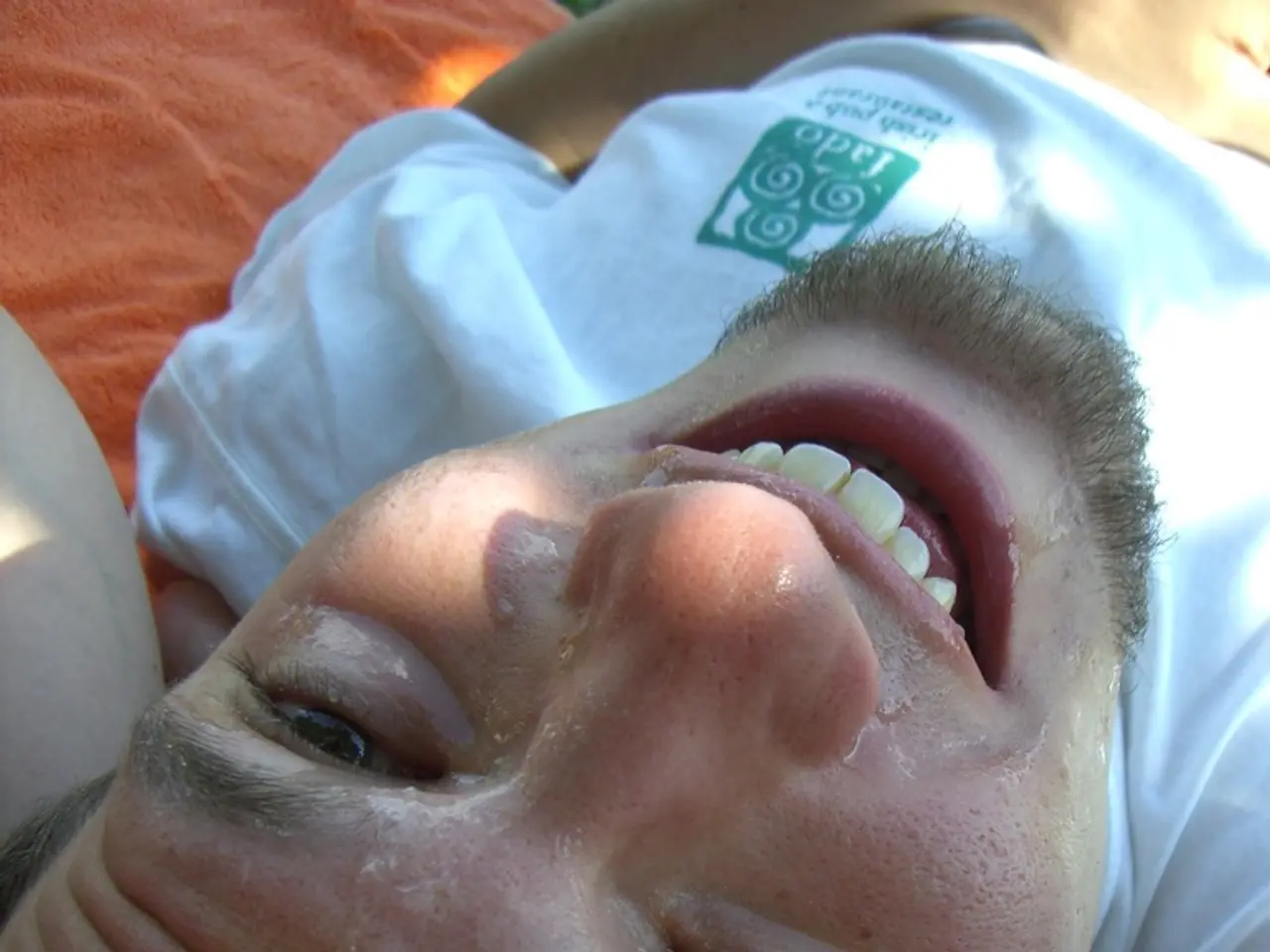Symptoms of Postural Orthostatic Tachycardia Syndrome Affecting the Heart: Palpitations and Chest Discomfort
Postural Orthostatic Tachycardia Syndrome (POTS) is a complex condition that affects the body's ability to regulate blood flow, leading to symptoms such as chest pain, palpitations, and a racing heartbeat. These symptoms can be distressing, even when tests show no serious heart problems.
One of the most common symptoms experienced by POTS patients is chest pain, which can feel sharp, pressure-like, or achy and is usually felt on the left side of the chest. This can be particularly alarming, causing anxiety and avoidance of exercise, social situations, or even leaving the house.
The diagnosis of POTS involves a tilt table test or asking the patient to stand while monitoring heart rate. Once diagnosed, a personalised treatment plan is developed, combining lifestyle modifications, supportive therapies, and pharmacologic agents.
Nonpharmacological treatments, which are frontline and essential, include hydration and increased sodium intake to help increase blood volume and reduce symptoms. Compression garments, such as compression stockings, are also used to improve blood flow and help control heart rate upon standing. Exercise programs are crucial, starting with cardiovascular and strengthening exercises in reclined or supine positions, gradually increasing to upright endurance activities.
Other nonpharmacological treatments include elevating the head of the bed to reduce morning orthostatic symptoms, activity modification and pacing strategies for energy management, sleep education and management, and pain management techniques such as pain neuroscience education, mindfulness, breath training, and cognitive coping strategies.
While no specific medication is officially approved for POTS, several drugs are commonly used to target symptoms or underlying causes. These include beta-blockers to reduce heart rate, ivabradine to control rapid heart rate, midodrine to raise blood pressure by constricting blood vessels, fludrocortisone to increase blood volume, and pyridostigmine to improve autonomic function. Other medications may be employed to manage pain, nausea, or immune-related symptoms in some patients.
Collaboration with healthcare providers experienced in POTS is crucial to develop a personalised treatment plan addressing specific symptoms and triggers. Psychological support might be beneficial for some, given anxiety and stress can exacerbate symptoms. Occupational therapy and rehabilitation interventions can be cost-effective and improve quality of life through individualised goal setting and coping strategies.
Patient education is powerful: the more people who understand their condition, the more confident they feel in managing it. Support groups can also be a lifeline, helping people feel understood and less alone. These effects can be especially hard on younger people, who may feel isolated from their peers and left behind in school or work.
Despite the challenges, studies show that most people with POTS need help with basic tasks like shopping, and some even need help getting dressed or moving around. However, with the right support and treatment, people with POTS can lead fulfilling lives.
In conclusion, the comprehensive approach combining lifestyle modifications, supportive therapies, and pharmacologic agents is the current standard to manage POTS symptoms effectively. Counselling can help manage the anxiety that often comes with chronic symptoms and teach helpful ways to cope. Learning how to prevent flare-ups, like staying hydrated, using compression gear, and building up exercise slowly, can reduce the need for hospital visits. With the right care and support, people with POTS can live active, fulfilling lives.
[1] Source: "Clinical Practice Guidelines for the Diagnosis and Treatment of Postural Tachycardia Syndrome in Adults: A Report from the Heart Rhythm Society, the European Society of Cardiology, and the American Autonomic Society" [2] Source: "Pharmacologic Therapy for Postural Tachycardia Syndrome" by Dr. Michael R. Gold, Dr. Paul A. Wise, and Dr. Shannon D. Dunlay [3] Source: "Lifestyle Management of Postural Tachycardia Syndrome" by Dr. Mary Ann O'Donnell [4] Source: "Nonpharmacologic Treatments for Postural Tachycardia Syndrome" by Dr. Michael R. Gold [5] Source: "Psychological and Behavioural Management of Postural Tachycardia Syndrome" by Dr. Shannon D. Dunlay and Dr. Paul A. Wise
- Engaging in exercise programs, maintaining proper hydration, and using compression garments can help manage symptoms of Postural Orthostatic Tachycardia Syndrome (POTS), such as chest pain and racing heartbeat.
- Science has identified several drugs that can target symptoms or underlying causes of POTS, including beta-blockers, ivabradine, midodrine, fludrocortisone, and pyridostigmine, though none are officially approved for the condition.
- In addition to medication, collaboration with healthcare providers, psychological support, and occupational therapy interventions can be vital in managing chronic conditions like POTS and improving overall quality of life.
- Patient education, support groups, and a comprehensive approach involving various medical-conditions management strategies, health-and-wellness practices, and cardiovascular-health maintenance can help individuals with POTS lead active, fulfilling lives.




